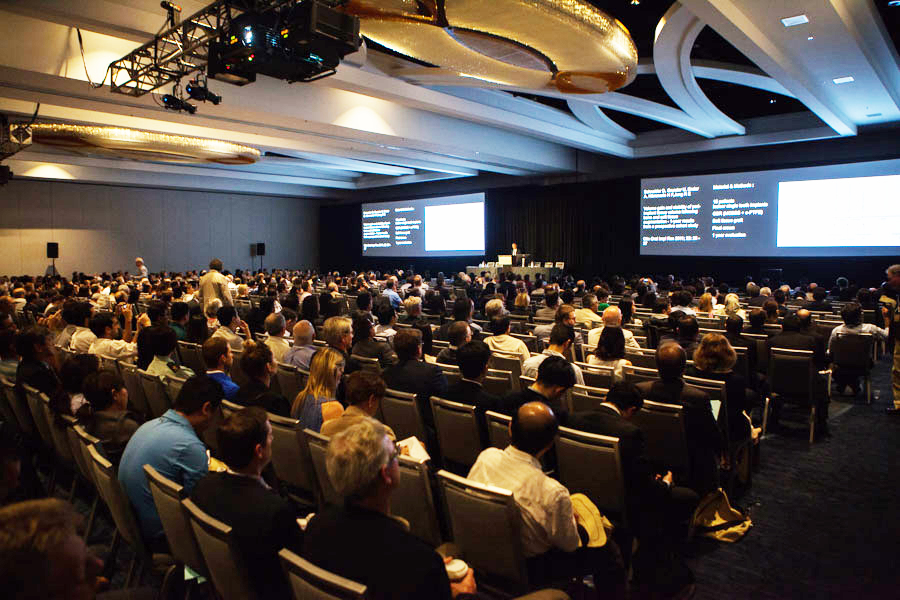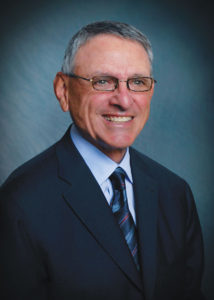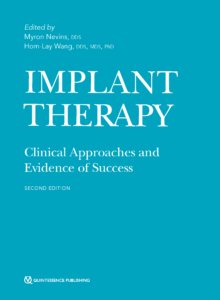The International Symposium on Periodontics & Restorative Dentistry (ISPRD) is regarded throughout the global dental community as one of the most important interdisciplinary dental symposia. Occurring every 3 years in Boston, Massachusetts, the symposium brings together world-renowned thought leaders from a number of disciplines. Speakers and attendees spend 4 days both exploring and expanding the boundaries of treatment possibilities. But how does ISPRD continue to grow and change to reflect the ever-evolving landscape of interdisciplinary dentistry, and what is it about this symposium that keeps attendees coming back every 3 years?
A Unique Vision
Today, the symposium is known for its three major tracks of education: periodontics, restorative dentistry, and implant dentistry. In an industry where interdisciplinary treatment is still a relatively recent development, ISPRD was one of the first symposia whose basis was founded in interdisciplinary dentistry. The reason for this is the symposium’s close connection to The International Journal of Periodontics & Restorative Dentistry (IJPRD), another first of its kind with regard to interdisciplinary treatment. The idea for ISPRD was first imagined by IJPRD co-editors-in-chief Gerald M. Kramer, DMD, and Myron Nevins, DDS, in 1981.
“The vision of the symposium occurred when I attended a Quintessence symposium in Japan,” Dr Nevins recalls. “Afterward, my partner Gerry Kramer and I met with Quintessence’s Publisher Horst-Wolfgang Haase and proposed the idea of having a symposium in the United States on periodontics and restorative dentistry.”

Myron Nevins, DDS (right) and Marc L. Nevins, DMD, MMSc (left), co-chairs of ISPRD 2019. Dr Myron Nevins has chaired every ISPRD since the symposium’s start in 1983.
The date of The First International Symposium on Periodontics & Restorative Dentistry was set for April 28–30, 1983, and the location was the Sheraton Hotel in Boston. Dr Nevins recalls how successful that first symposium was, which further validated the need for such a symposium. “We thought we would have between 700 and 800 attendees, so we came to the Sheraton Hotel prepared for that number. We were shocked when instead about 1,300 people arrived! That’s how it began, and we have many who have been to several of the symposia since, including a few who have been to every single one.”
The symposium would continue to grow attendance each year—changing venues twice to accommodate the larger numbers of both participants and speakers. But how does ISPRD continue to provide fresh value for returning attendees?
According to Dr Nevins, one way the symposium provides value is by scheduling the program for every 3 years rather than annually. “Nobody has enough new information every year to present something that people haven’t heard before. Certainly all aspects of this industry evolve, but not at the pace that allows you to organize as comprehensive a program as ISPRD. Portions of the program would become the ‘same old, same old,’ and the knowledge value to attendees would be greatly diminished. This way, I think the audience anticipates and expects that they will receive a refreshing review of what has happened since the last meeting as well as an exciting look at the present and future of these three major disciplines of dentistry.”

Ueli Grunder, DMD, presenting during ISPRD 2016.
Another way ISPRD has been designed to maximize value for participants is through its concurrent session schedule. The program has always included at least two concurrent daily sessions: one session focusing on issues related to periodontics and one focusing on restorative dentistry. Participants are free to attend the presentations on the topics that interest them the most, flowing freely between the sessions in an osmotic design that allows for maximal exchanging of information between two closely related disciplines. The program provides added value through special programming on topics that intersect with periodontal and restorative dentistry treatment: The inclusion of a half-day on adult orthodontic treatment has become a staple in the program since the 7th ISPRD in 2000.
Everyone practicing dentistry has something to benefit from at this symposium—something to refresh their thoughts or challenge their most cherished beliefs.
Magnifying Innovation
In addition to the new ideas, new materials, and new therapeutics presented in this year’s program, something else will be making its debut: the second edition of Implant Therapy: Clinical Approaches and Evidence of Success, edited by Drs Myron Nevins and Hom-Lay Wang. The book will touch on many of the same topics presented on at ISPRD 2019, and includes several ISPRD speakers as contributors. Dr Nevins reflects on the need to publish the new edition now.
“The first edition of Implant Therapy: Clinical Approaches and Evidence of Success (Quintessence, 1998) was very well received by the international dental community. It was published in multiple languages and introduced several new interdisciplinary therapies. It has been 20 years, and so much has changed in that time. Implants have changed, implant dentistry has changed, and we decided that an update was necessary. This second edition includes chapters written by many of the world’s authorities in implant treatment, and it addresses topics of implant therapy from a variety of perspectives—from a surgical point of view, a regenerative point of view, a tooth position point of view, and a restorative point of view. The book will magnify those concepts and better enable clinicians to provide implant treatment at the highest standard of care when they return to their practices.”
ISPRD 2019 attendees, whether new or returning, can expect this year’s program to shine light on the most exciting advances taking place around the world as many of dentistry’s greatest innovators share their best clinical efforts. With a dynamic schedule filled with fresh topics, innovative clinical solutions, and plenty of scientific evidence, ISPRD will continue in what is by now a familiar tradition of immersing clinicians in the new and unfamiliar.

 Myron Nevins, DDS, is the coeditor-in-chief of The International Journal of Periodontics & Restorative Dentistry and an associate clinical professor of periodontology at the Harvard School of Dental Medicine. He also holds the appointment of clinical professor of periodontics at the University of Pennsylvania School of Dentistry and Temple University Kornberg School of Dentistry. Dr Nevins is a past president of the American Academy of Periodontology and a former director and chairman of the American Board of Periodontology, where his contributions have been recognized with the Gold Medal and the Master Clinician Awards. He maintains a private practice limited to periodontics and implantology in Swampscott, Massachusetts, and is the founder and president of Perio Imp Research, Inc.
Myron Nevins, DDS, is the coeditor-in-chief of The International Journal of Periodontics & Restorative Dentistry and an associate clinical professor of periodontology at the Harvard School of Dental Medicine. He also holds the appointment of clinical professor of periodontics at the University of Pennsylvania School of Dentistry and Temple University Kornberg School of Dentistry. Dr Nevins is a past president of the American Academy of Periodontology and a former director and chairman of the American Board of Periodontology, where his contributions have been recognized with the Gold Medal and the Master Clinician Awards. He maintains a private practice limited to periodontics and implantology in Swampscott, Massachusetts, and is the founder and president of Perio Imp Research, Inc.
 Implant Therapy: Clinical Approaches and Evidence of Success, Second Edition
Implant Therapy: Clinical Approaches and Evidence of Success, Second Edition
Edited by Myron Nevins and Hom-Lay Wang
Since the publication of the first edition of this book 20 years ago, the landscape of implant dentistry has changed dramatically. Both the industry and patient demand have expanded exponentially, leaving the clinician with many decisions to make (and often as many questions to ask) regarding patient selection, surgical timing and techniques, implant types, and restorative approaches. This volume brings together the knowledge of the foremost leaders in implant dentistry, covering all aspects of the treatment process, from decision-making and treatment planning through imaging, surgical techniques, bone and soft tissue augmentation, multidisciplinary approaches, loading protocols, and finally strategies for preventing and treating complications and peri-implantitis as well as providing effective implant maintenance therapy. Filled with expert knowledge based on decades of research and clinical experience as well as abundant illustrations and clinical case presentations, this book is an indispensable resource for clinicians seeking to provide implant treatment at the highest standard of care.
544 pp; 1,782 illus; ©2019; ISBN 978-0-86715-798-7 (B7987); $328 Special preorder price! $265
Available June 2019

